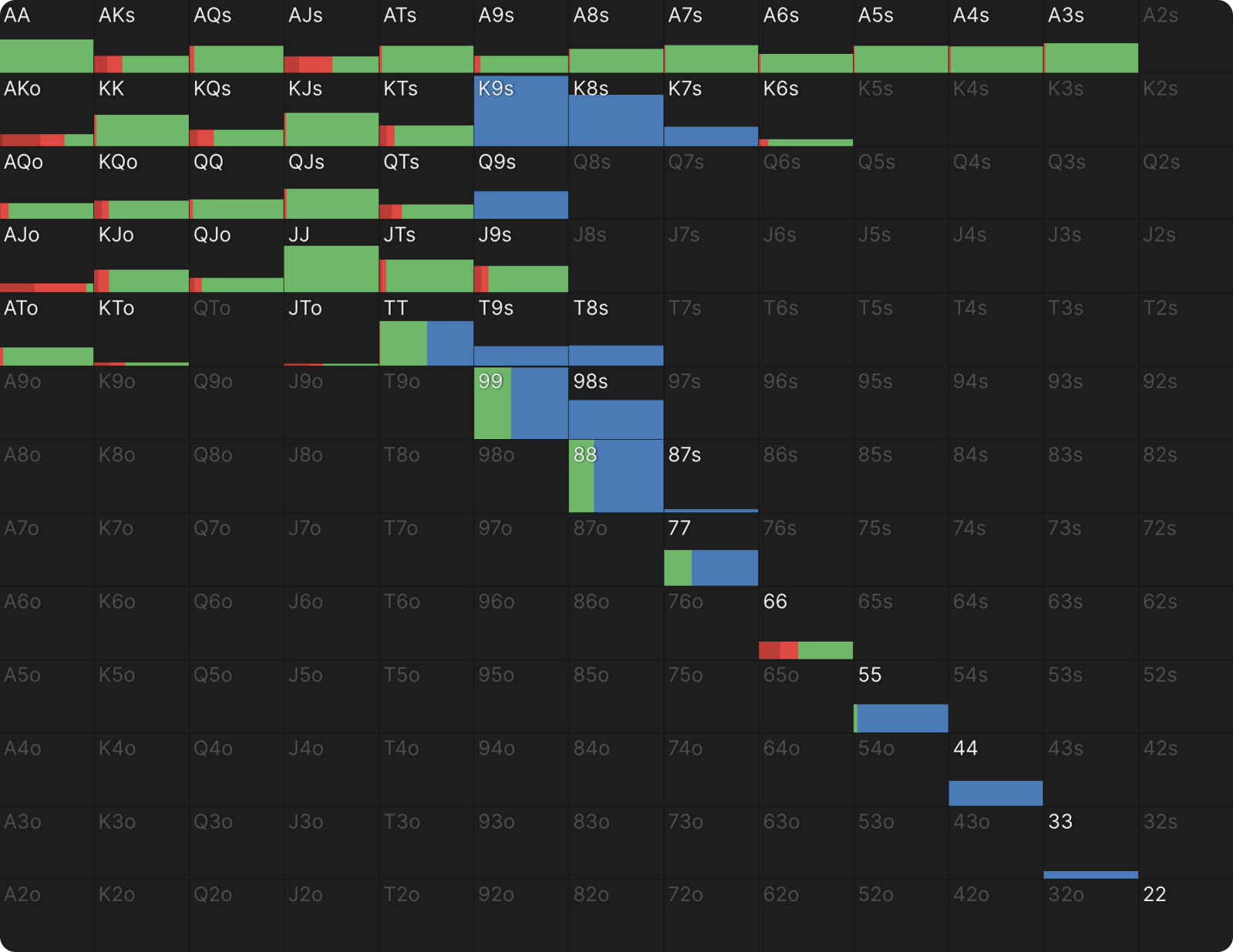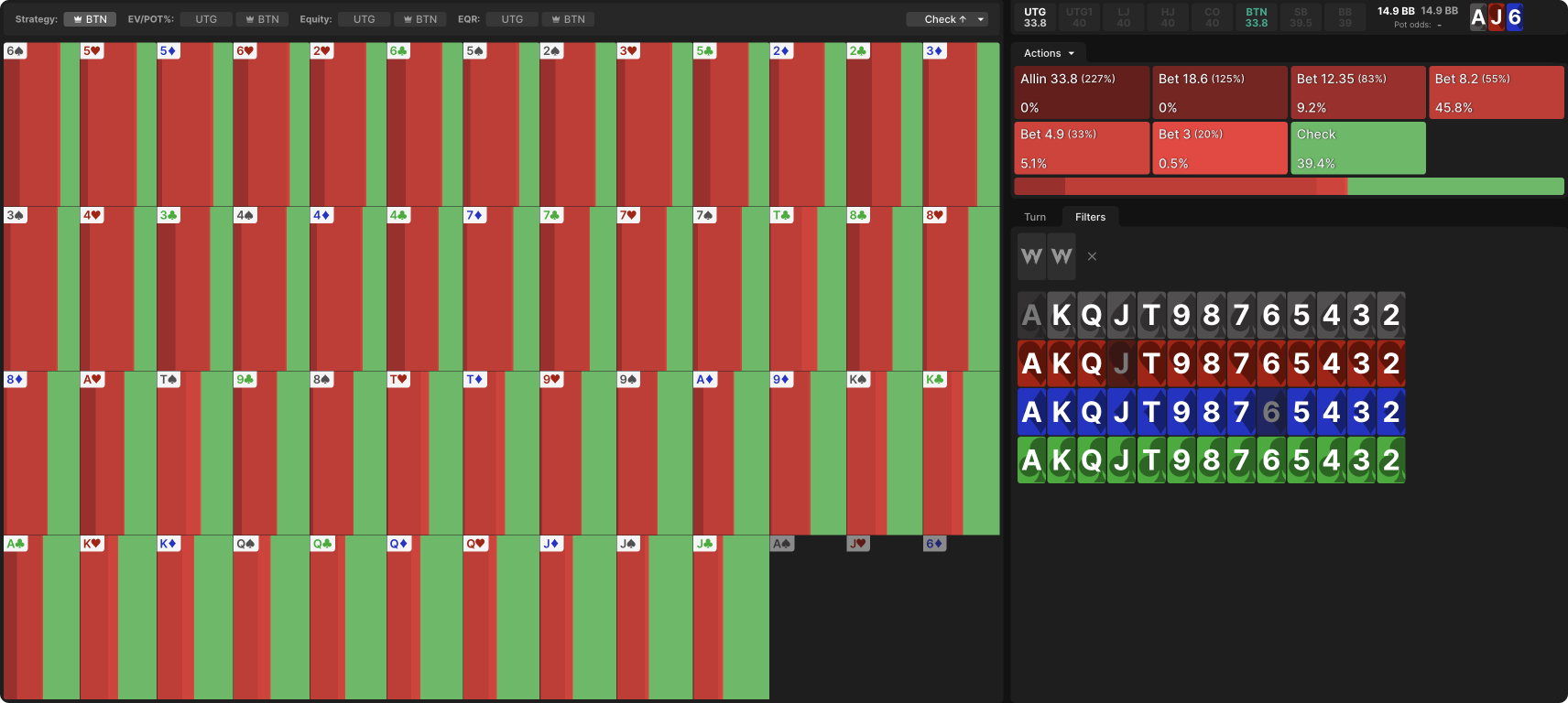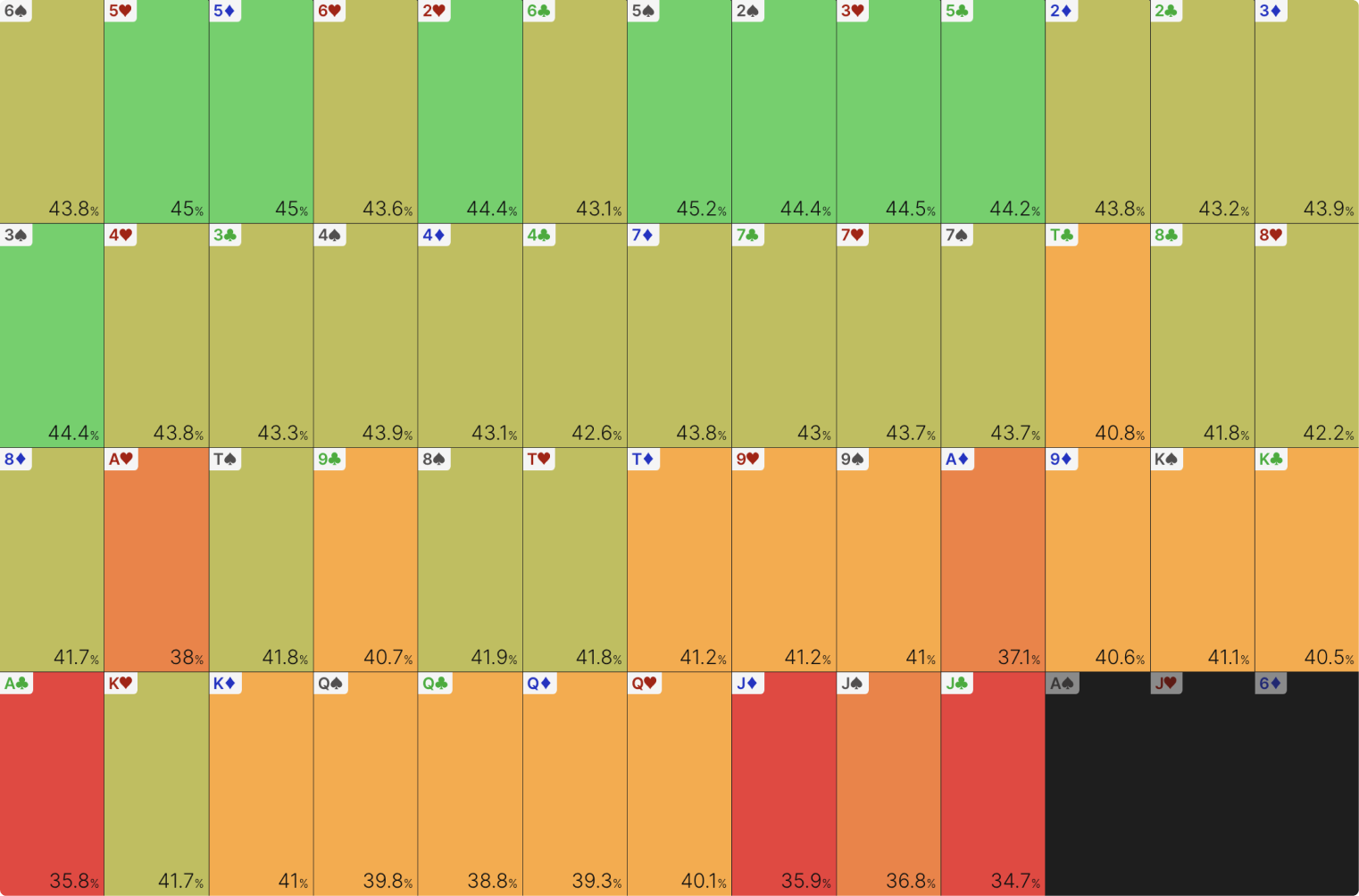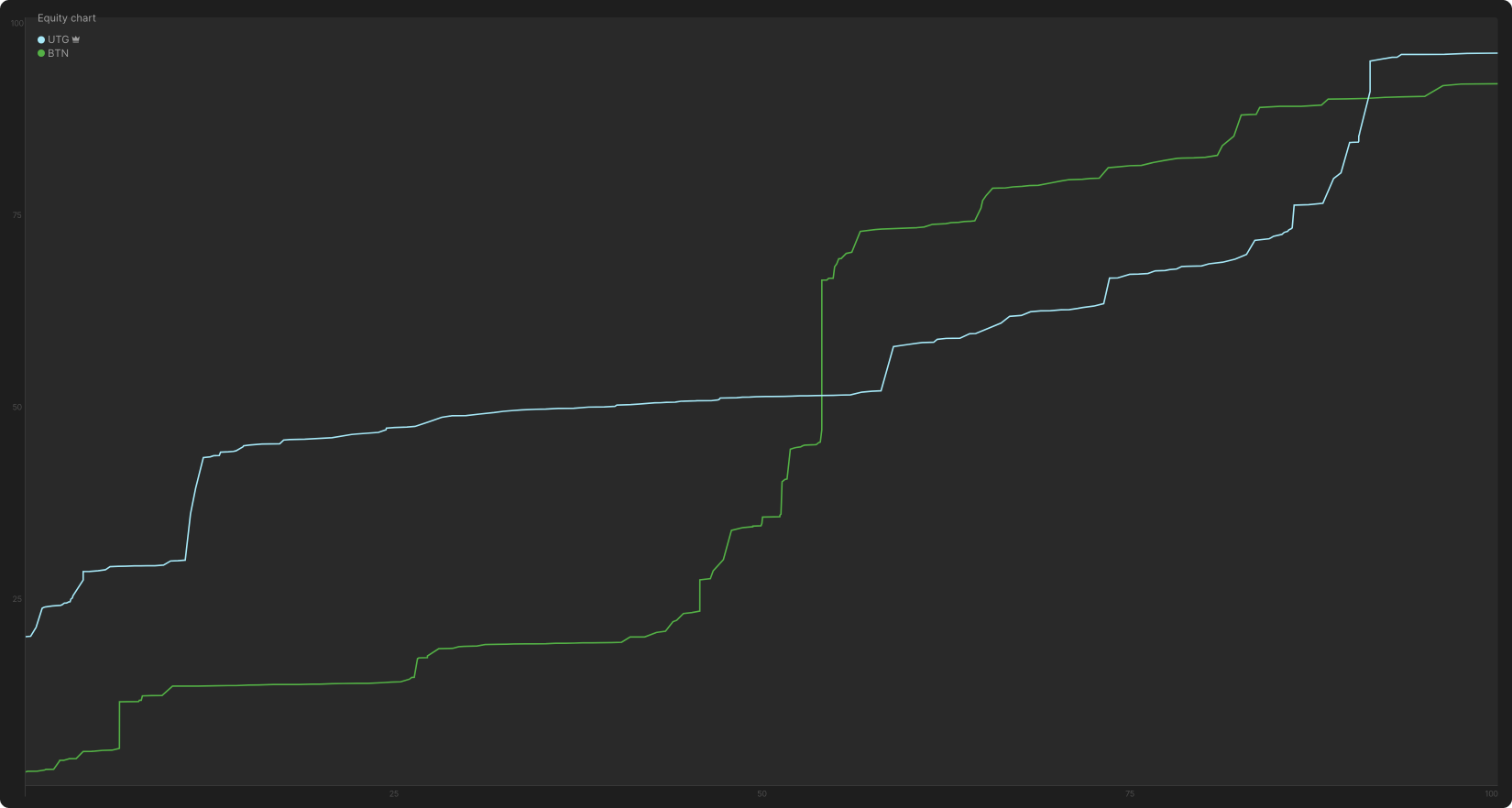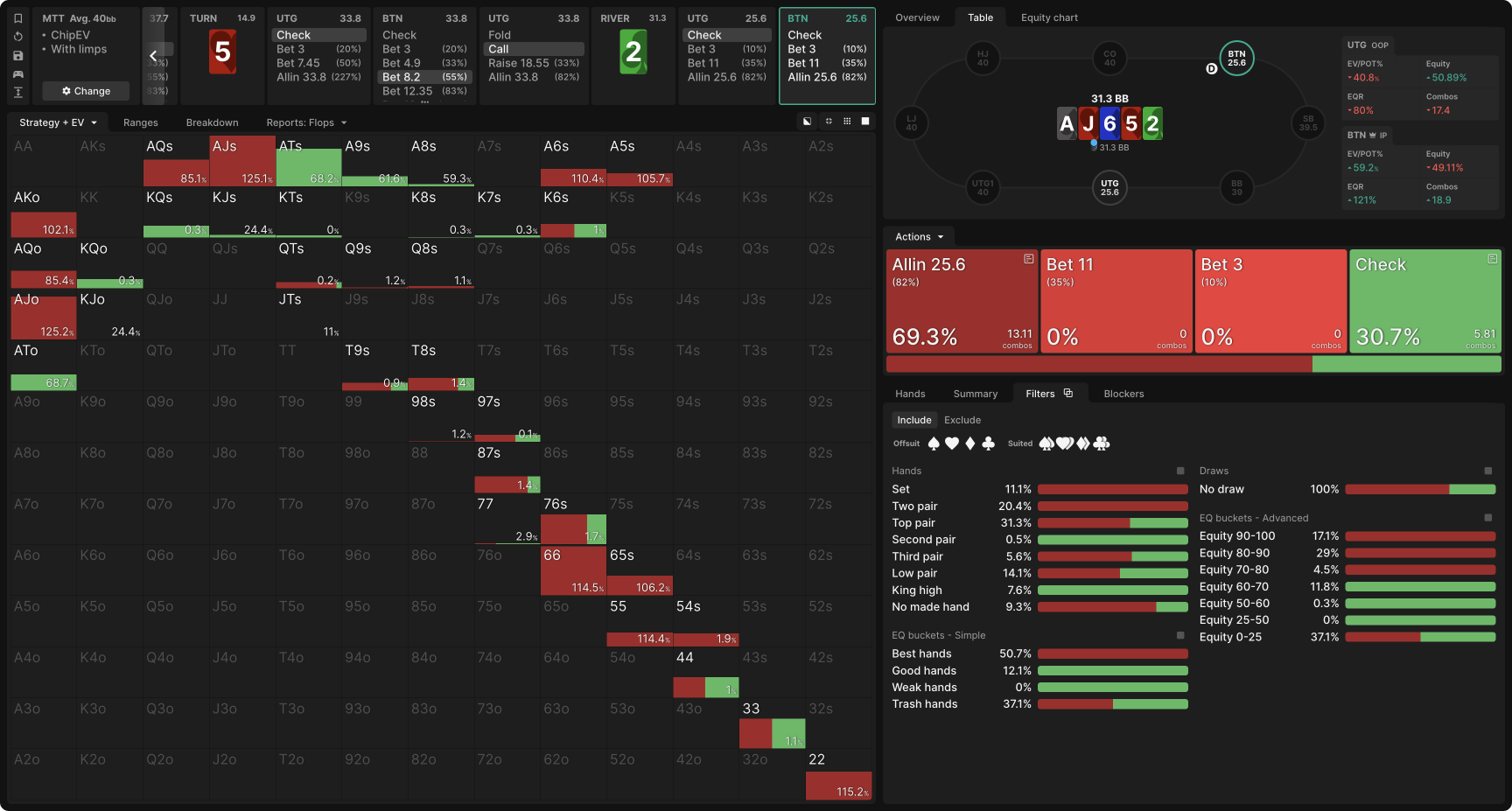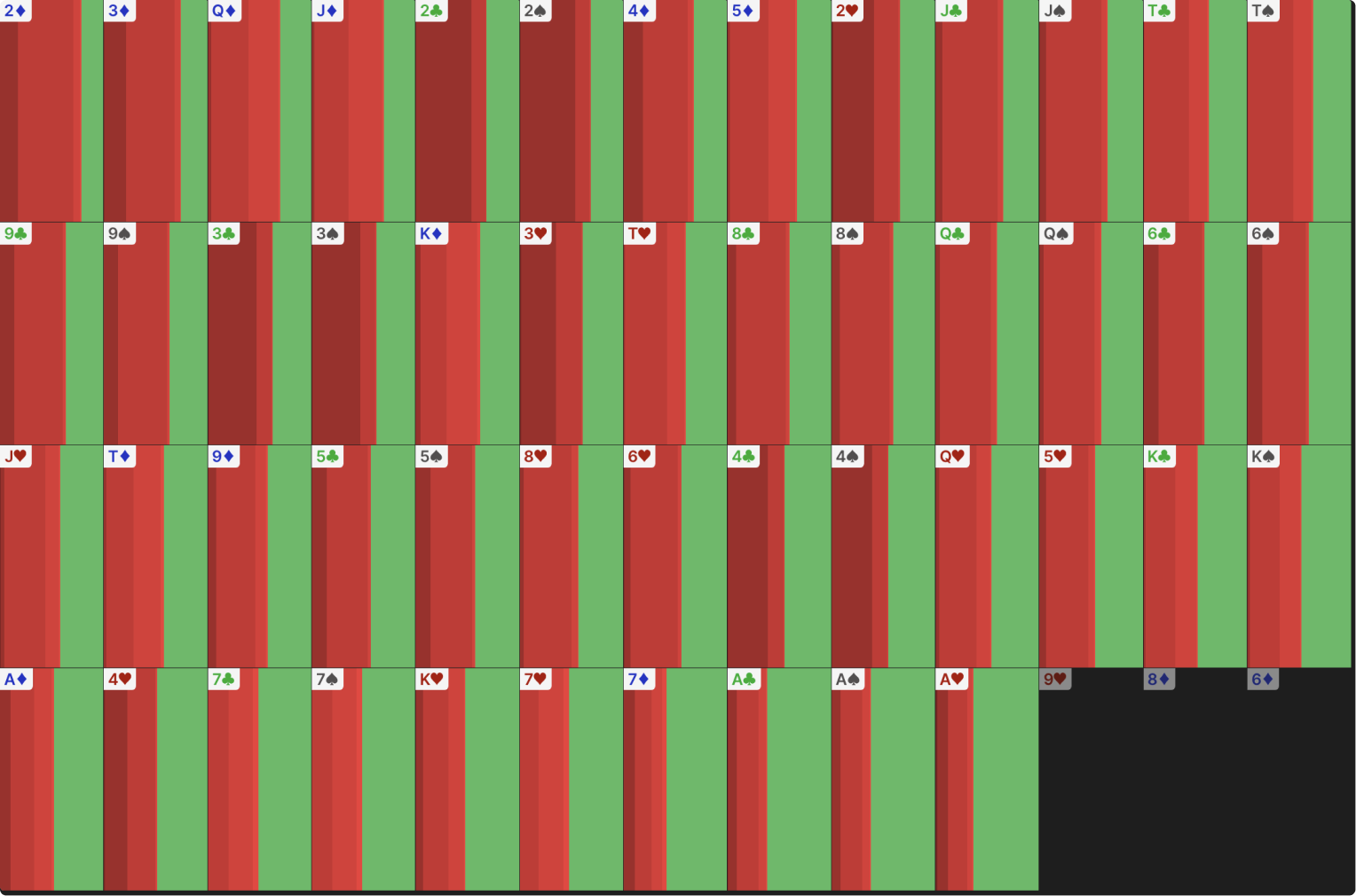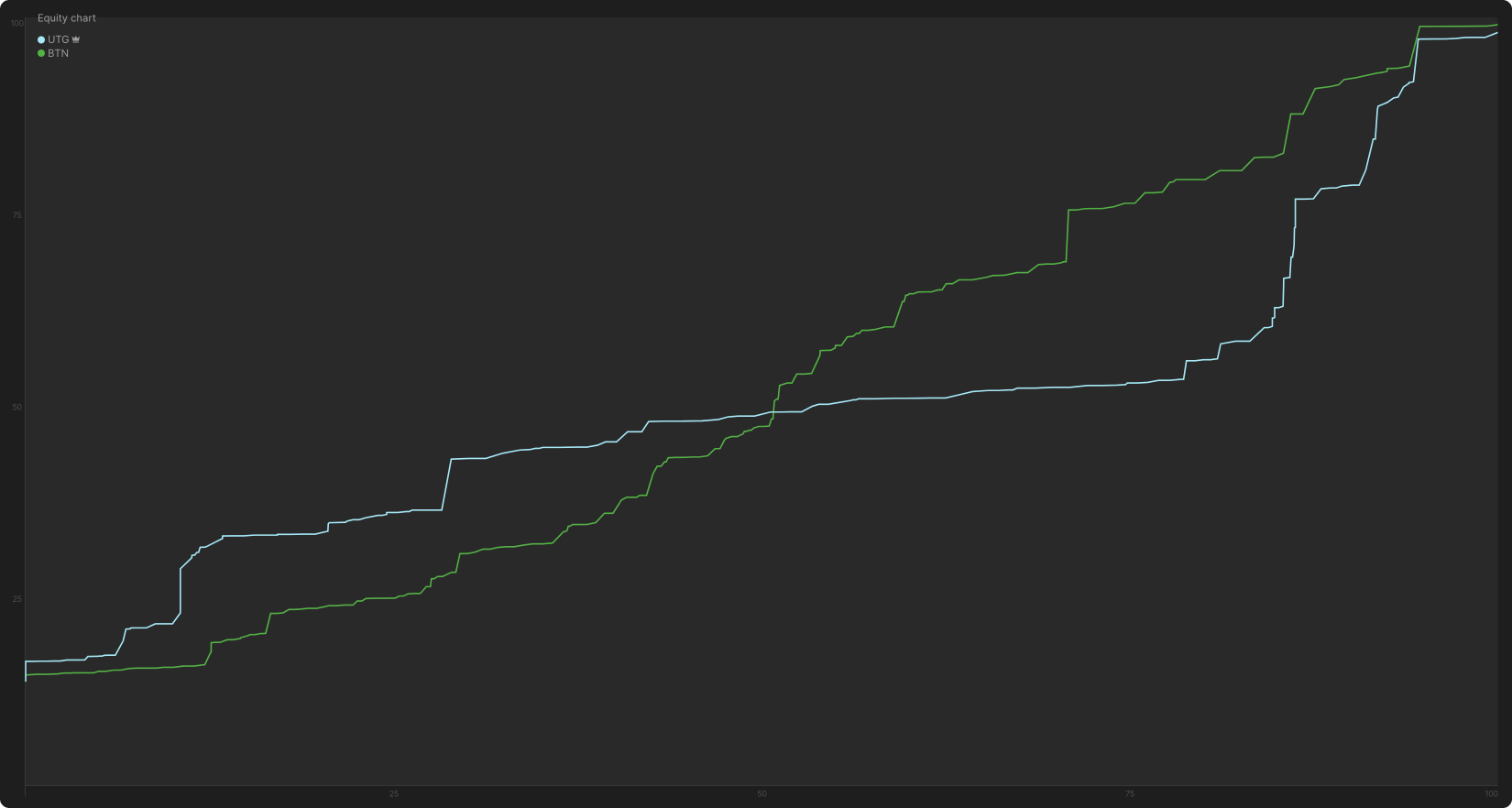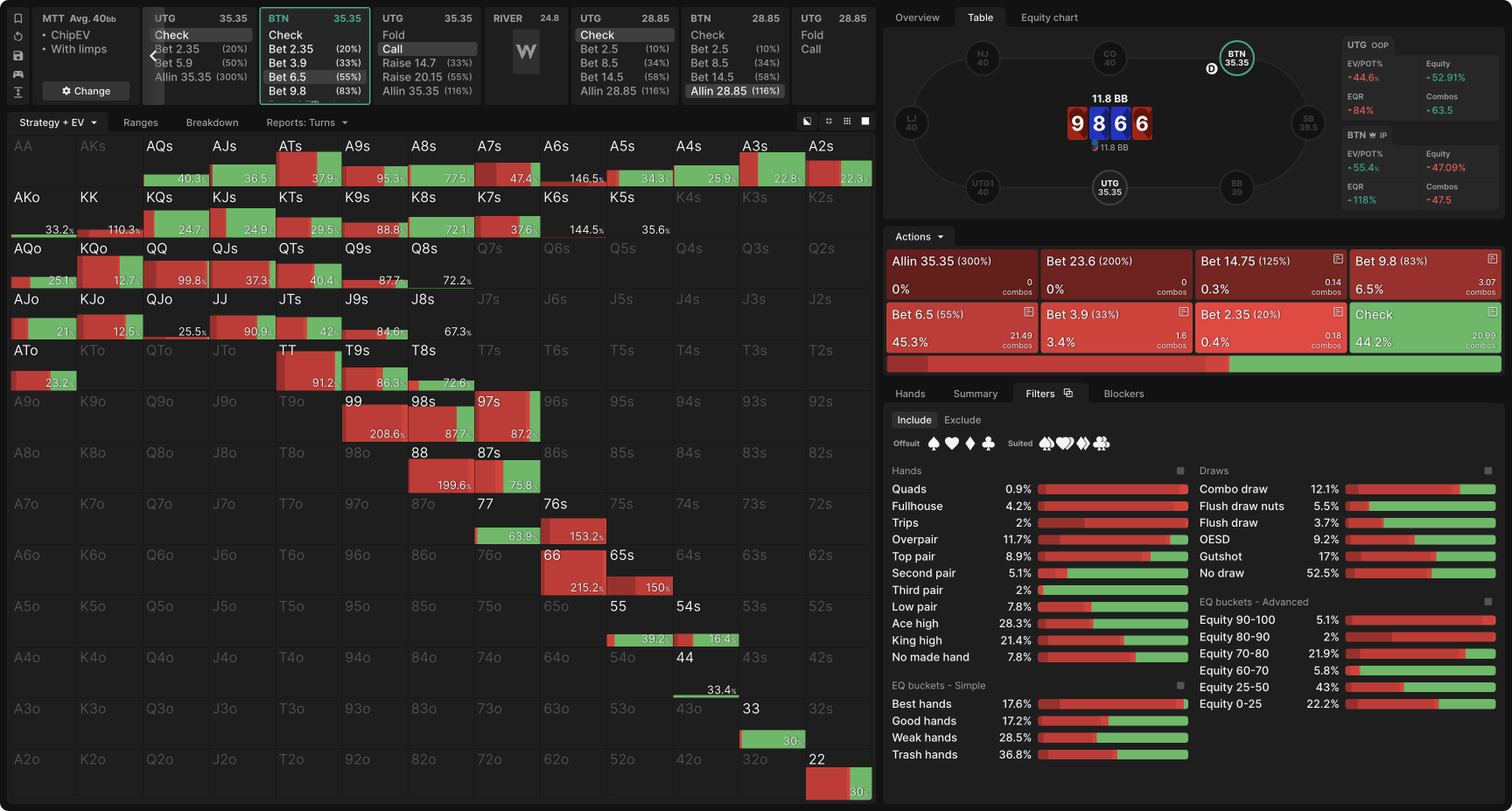Barreling as IP Cold-Caller
You cold-calledCold call
To call a bet/raise when you have not invested any money in the pot yet. a preflop raise. That’s scary. You bet into a check from the preflop raiser, which is doubly scary because you know a check from an out of position (OOP) raiser should be uncapped and can possibly be followed up by a raise.
The good news is they didn’t raise your bet. The bad news is they didn’t fold either, which is probably what you were hoping for, even if you had a pair.
So, now you’ve got to play the turn, which means there are a couple of things to figure out:
- How likely the new card helps them, and to what degree?
- How thinly to value bet, and for what size?
- How often you should bluff, and which hands are appropriate?
And don’t forget that even if the raiser is a bit more capped now, they’ve still got a pretty strong range. Scary stuff…
The only thing to fear is not knowing what to do.
As always, our answer to intimidating situations like this one will be a sober analysis of strategy and tactics and frequencies. For the elite poker player, the final fear is not the risk of betting into a strong hand or losing the pot or even getting bluffed. Those are all par for the course. The only thing to fear is not knowing what to do. Once you have the tools to evaluate the spot and construct a reasonable strategy, you can put your energy into that rather than worrying and guessing.
Though not necessary, you may wish to (re)read this article on playing the flop as an in position (IP) cold-caller before continuing on. We will draw on the same examples to examine how the cold-caller should approach barreling the turn and river after having bet the flop.
These examples derive from 40bb MTT ChipEV ranges. The principles distilled from them will apply to many other situations where you are playing as an IP cold-caller, regardless of exact positions, stack sizes, or game format.
A Static Flop
BTN does not bet often when checked to on A♠J♥6♦. When they do bet, it’s for a relatively large size (55% pot, compared to the 20% and 33% pot-sized bets they favor on the average flop) and constructed in a polar manner. They bet their best hands most often, except for JJ, which blocks much of UTG’s marginal continuing range:
In response, UTG does not raise often because they would have already bet some of their strongest hands, and static boards are more conducive to slowplaying. Therefore, their calling range is strong and uncapped: containing sets, two pair, and lots of top and middle pair along with some marginal pairs and draws:
Evaluating the Turn
Even though BTN, as the cold-caller, does not bet this flop particularly often against UTG, they do follow through with a majority of their flop betting range on the majority of turns. This is because they already checked the bulk of their best checking hands on the flop unless the board texture changes considerably on the turn—which, by definition, it seldom will on a static board—BTN mostly wants to keep firing a polar range.
Their most used turn size is 55% pot again, which sets up an 82% pot river shove. That’s not perfectly geometric, but it’s close, especially considering the solver is restricted in its choice of bet sizes.
BTN, as the cold-caller, does not need a turn card that helps them to keep up the betting—they just need to fade the cards that actively help UTG.
BTN’s betting frequency closely tracks their equity, with 6-x and blanks being the best cards to barrel:
Even though UTG is still uncapped, their range is mostly condensed, while BTN’s is more polar. Thus, BTN does not need a turn card that helps them to keep up the betting—they just need to fade the cards that actively help UTG. Those are the Broadway cards, which introduce a lot of new trips, new two pairs, and straights into UTG’s range.
Blank Turn
For example, here’s how the equity is distributed on a 5♥ turn:
After UTG checks turn, BTN barrels a polar range, favoring underpairs over gutshots when bluffing:
The small pocket pairs have only two outs rather than four, and their outs are slightly less clean. However, they unblock UTG’s folds, which is more important in this spot. UTG’s primary folds are gutshots and pocket pairs like KK, QQ, and TT, so BTN doesn’t want to hold those cards when bluffing.
Blank River
On an inconsequential river like the 2♣, BTN continues the polarized strategy by shoving 69% of their range. The bulk of UTG’s calldown range will be Ace-x, so any hand that can beat top pair is good enough to shove for value, even though there’s a real risk of shoving into a slowplayed monster. In practical terms, that means even AQ can shove for value:
A Dynamic Flop
BTN’s barreling strategy on a dynamic board like 9♥8♦6♦ is not as different from the static one as you might expect. After betting 33% pot—their most commonly used size—on the flop, BTN barrels roughly 60% of their range on this board as well, favoring the 55% pot bet size:
There are two important differences, however:
- BTN bets the 986tt flop more often than the AJ6r, so they arrive at this turn node with a more linear range.
- After betting 33% pot on the flop, the 55% turn sizing is further from geometric, leaving 116% pot in the stacks.
These points are related. The objective of geometric betting is to grow the pot on early streets with hands you anticipate value betting or bluffing all-in on the river. On a dynamic board, it is harder to predict what your value bets and bluffs will be on later streets. Hence, the incentive to avoid growing the pot so aggressively until the final card is dealt.
The objective of geometric betting is to grow the pot with hands you anticipate value betting or bluffing all-in on the river.
That said, just as on the AJ6r flop, after the action goes check-bet-call, BTN has the more polar range and UTG the more condensed one. In fact, UTG has even less incentive to slowplay nutty hands on a more dynamic board. So, as before, the operative question for BTN is: “How much does this turn card improve my opponent’s range?”
As you can see from the aggregate turn report above, this is not as simple as barreling frequently on blanks and checking frequently on cards that change the board texture. In fact, the four turn cards on which BTN has the highest betting frequency are all flush-completing diamonds!
A 2♦ on the turn does technically uncap UTG, who often check-calls A♦K♦ and A♦Q♦. But overall, BTN has many more strong hands and the more polar range:
The worst turns for BTN are an Ace, a King, and straight-completing cards. As long as those don’t come, BTN can continue betting good pairs for value. After barreling 55% pot on the 2♦ turn, BTN shoves as wide as T♠T♣ for value on a rivered 2♠.
The trickiest turns to play are the ones in the middle, cards such as the 6♥, where neither betting nor checking predominates in BTN’s strategy:
The most important heuristics to recognize here are:
- BTN never slowplays their strongest hands. This is typical of dynamic boards. Many of BTN’s strongest hands are overpairs, which are in danger of losing value on the river. But even quads and full houses are pure bets because so much of UTG’s range consists of hands sticking around to see whether the river improves them.
- BTN does not bet flush draws very often. Their best bluffs are actually overcards with a single diamond, such as K♦Q♣, which both block UTG’s continuing range and will make for a good bluff on diamond rivers if called.
Conclusion
Barreling, as the cold-caller, into a preflop raiser who has checked and called the flop is actually not so scary of a scenario after all. Even when the preflop raiser is uncapped, the preflop caller will still have the more polar range after their flop bet is called. From there, the polarized vs condensed dynamic should be familiar.
When the turn and river cards do not dramatically improve the opponent’s range, you can continue barreling with a polarized range, using more geometric sizings when the board is more static.
Be ambitious with your value bets! Don’t let the danger of running into the occasional monster scare you away from getting full value from your opponent’s many marginal hands. They are mostly playing a bluff catching game after check-calling the flop. They know they appear capped and will be ready to call down with good bluff catchers. On many runouts at this SPR, one good pair will be enough to bet turn and shove river for value.
The BB’s incentives for calling an SB preflop raise differ from those of a cold-caller facing a raise from, say, LJ or CO. And the SB’s incentives for raising differ from those of an open-raiser in any other position.
Author
Andrew Brokos
Andrew Brokos has been a professional poker player, coach, and author for over 15 years. He co-hosts the Thinking Poker Podcast and is the author of the Play Optimal Poker books, among others.
Wizards, you don’t want to miss out on ‘Daily Dose of GTO,’ it’s the most valuable freeroll of the year!
We Are Hiring
We are looking for remarkable individuals to join us in our quest to build the next-generation poker training ecosystem. If you are passionate, dedicated, and driven to excel, we want to hear from you. Join us in redefining how poker is being studied.




